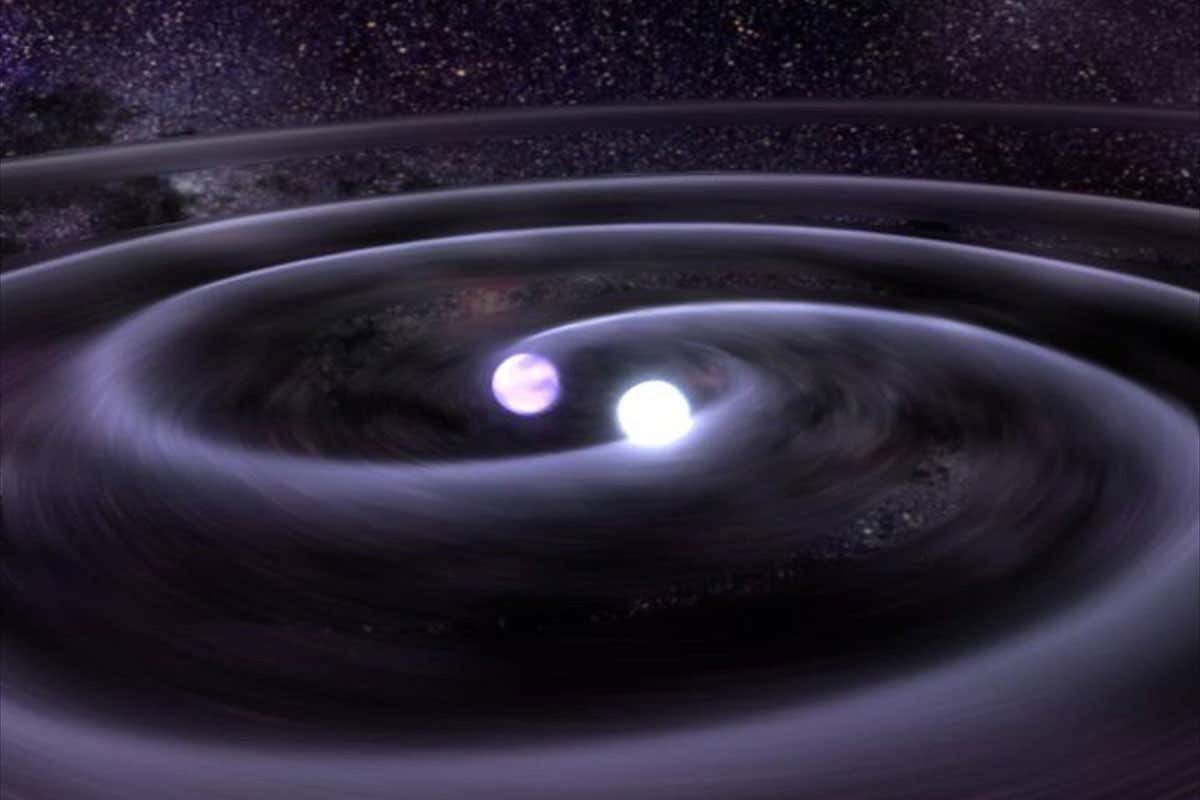Most of the nearly 100 FRBs we have detected consist of a single burst. But a few have been found to repeat, which makes it easier to find where they are coming from and determine what is causing them.
One such source, known as FRB 171019, was first detected in 2017, when a relatively bright burst was seen with the Australian Square Kilometre Array Pathfinder. It was followed by dimmer and dimmer bursts, some nearly 600 times fainter than the initial flash. This is unlike the first and most active repeating FRB, which has produced several bright bursts.
Jinchen Jiang at Peking University in China and his colleagues created a model to account for the successively dimmer bursts seen from FRB 171019. They suggest that the first bright burst may have been created when two neutron stars collided.
Neutron stars are extremely dense objects. When two of them orbit one another, they rotate closer and closer before they collide. The result can be a more massive neutron star, which would potentially have different rates of rotation in its different layers. This could create powerful oscillations in the body of star - or starquakes - that throw out radiation that we see as faint bursts.
"This is one of many proposals for how FRBs form. Personally, I wouldn't bet on it, but it's a possibility of course," says Bing Zhang at the University of Nevada, Las Vegas. He says he is sceptical because FRB 171019 has only been observed for a few years. "Suppose in the future, there is another brighter burst detected from this source. In that case, this model is dead," he says.
This explanation may not apply to the other repeating FRBs we have seen. To find out what is truly causing these bursts, we need to see enough of them repeating that we can figure out precisely where they're coming from. "It may be that there are a few ways FRBs are made. We just don't know for sure yet," says Zhang.
Brian Metzger at Columbia University in New York says he thinks most repeating FRBs arise from flaring magnetars, a type of neutron star where starquakes can disrupt the magnetic field and send out powerful flares. "It is possible that some of these flaring magnetars are the long-lived remnants of neutron star mergers," he says.
He says it is possible that the end stages of a merger could generate an FRB, but more observations of similar bright bursts followed by dim ones will be needed to determine whether this is indeed the source.
Reference: arxiv.org/abs/1909.10961




Comment: See also: